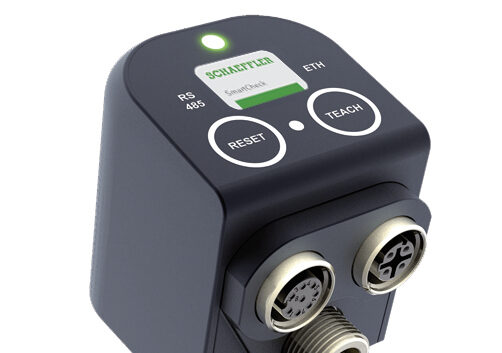Royal Mail delivered around 14.4 billion letters in 2017-18. Its ability to process, sort and get letters, packages and parcels to their final destinations quickly and efficiently relies on a plethora of devices such as carousel sorting machines.
Carousel sorting machines form a vital part of the Royal Mail’s post processing infrastructure, and any unplanned downtime can have a significant impact on the organization’s delivery quality criteria. As such, it took the decision to implement a condition monitoring solution from Schaeffler across 26 of its sites to keep things moving.
How and why?
How a large letter (A4 size and above) carousel sorting machine works is straightforward: mail is fed into it at one end, the letters are read by an automatic address read function then dropped into a carrier and then into the appropriate trays ready for despatch. However, despite the relative simplicity of these machines, any disruption to their operation can have a massive knock-on effect.
“With each machine successfully sorting over 20,000 items of mail every hour, large letter carousel sorting machines are critical in meeting our quality targets,” explains Tim Brook, automation technical analyst at Royal Mail. “Failing that delivery quality criteria can result in a regulatory fine, as well as negative publicity.”
New approach
In 2017, Brook decided to move from a preventive to a predictive maintenance approach. He attended a vibration monitoring seminar by Schaeffler at the University of Hull, which convinced him that a condition monitoring solution with remote support was needed.
Soon after the seminar, Brook contacted Schaeffler to discuss the best solution for his application and to arrange a trial at Royal Mail’s Nottingham sorting office. Schaeffler recommended its SmartCheck condition monitoring system, with SmartConnectBox connectivity hardware and a SmartLamp alarm beacon mounted above each of the carousel sorting machines. These were complemented by Schaeffler’s SmartVisual and SmartUtility visualization and analysis software.
Cause for alarm
With the help of the team at Schaeffler, four SmartChecks were installed on the Nottingham site’s carousel sorting machine. A single SmartCheck is installed on the geared motors of the upper and lower carousel drives.
“During the trials at Nottingham, SmartCheck almost immediately started to indicate a potential problem with a motor, so we were convinced of its effectiveness,” says Brook. “It provided everything we were looking for in terms of integrating with our internal networks and predicting impending failures. Furthermore, it was easy to configure and manage.”
Sally Sillis, Schaeffler Technology Centre manager at Schaeffler UK, adds, “Every machine has its own characteristic vibration level. SmartCheck has an automatic learning mode that determines the appropriate alarm thresholds, while the SmartVisual software is used to remotely monitor and manage a machine’s condition by Royal Mail analysts in Leeds.”
Soon after being installed at Royal Mail’s Sheffield site, a mini-carousel motor registered alerts in the acceleration measurements. Analysis of the frequency spectrum suggested that this was a bearing or gearbox failure. According to Brook, a rapid deterioration was apparent: “I advised the engineers at Sheffield that a spare motor should be brought to site and changed in a normal maintenance slot, meaning no machine downtime.”
Financial benefits
Brook carried out a business benefit calculation by considering the man-hours and material costs – which would have been four hours to replace the motor and the cost of the motor itself. His figures were based on engineering costs alone and didn’t factor in any quality-of-service fines. Even so, the Royal Mail expects to save a minimum of £50,000 (US$69,000) per year in motor replacement costs alone, with a return on investment in three years.
Asked to drill down into these figures, Brook replies, “If a motor replacement is planned, it costs £3,756 (US$5,185) per motor based on parts and labor. If it is unplanned, then that cost nearly doubles due to operational loss. Motors were being replaced every three years to mitigate the risk of breakdowns, giving a figure of £65,000 (US$90,000) per year over 10 years. By predicting motor failures, the actual failure rate is far lower, with only four failures expected per year based on mean time between failure. The SmartChecks allow us to remove the mitigating ‘over-maintenance’ and save us £50,000 (US$69,000) per year on replacement costs alone.”
After being proved in Nottingham, the Schaeffler solution was rolled out to 24 other sites, with the final SmartCheck installation completed in Bristol in October 2020. Now, if an alarm level is reached at any of the 26 sites, the team at Leeds can contact the engineer at that site and recommend they get a replacement motor ready as a spare, and also additional maintenance to replace it.
Eyes on the prize
Schaeffler SmartVisual software is a key part of the Royal Mail’s condition monitoring solution. Its graphical user interface is based on simple drag-and-drop, so it is easy for the Leeds-based analysts to use, while mail center engineers can access it locally on their own PCs. This, coupled with the SmartLamps, provides a traffic light indication of any impending failure.
SmartChecks are also providing data on other machine drive components. Sillis says, “It’s not just about the traditional rotating machine components such as bearings – it’s also associated problems not covered in the original scope of requirements. Chain tension, for example, was not initially something the Royal Mail wanted to monitor, but the SmartChecks have picked up issues here too. We built the parameters with gear mesh frequencies, which have been really useful additions.”
Looking ahead
Brook is now looking to trial further Schaeffler conditioning monitoring systems including ProLink. He concludes, “After working closely with Schaeffler, I have absolutely no complaints. The company’s technical support and after-sales service have been second to none, and the knowledge and experience of the Schaeffler engineers who helped install the solution were invaluable. I’m very happy and look forward to continuing our relationship.”


